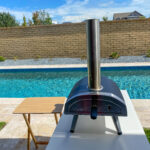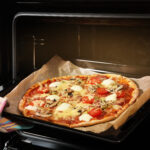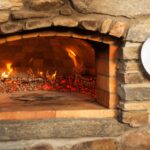Pizza ovens are a great addition to any kitchen or backyard. They are versatile and can be used to cook a wide variety of dishes beyond just pizza. Whether you are a professional chef or a home cook, there are many options to explore when it comes to cooking in a pizza oven.
One of the most popular dishes to cook in a pizza oven is Neapolitan-style pizza. This style of pizza is made with fresh tomatoes, a thin crust, and high-temperature ovens. It’s possible to cook a good Neapolitan-style pizza in less than five minutes using a wood-fired pizza oven that reaches up to 1,000° Fahrenheit. However, pizza is just the tip of the iceberg when it comes to what you can cook in a pizza oven.
From baked brie to roasted vegetables to bread, there are many delicious dishes that can be cooked in a pizza oven. The high heat and even cooking temperature of a pizza oven make it perfect for cooking a wide variety of foods. In this article, we will explore some of the best dishes to cook in a pizza oven and provide you with some inspiration for your next meal.
Understanding Your Pizza Oven
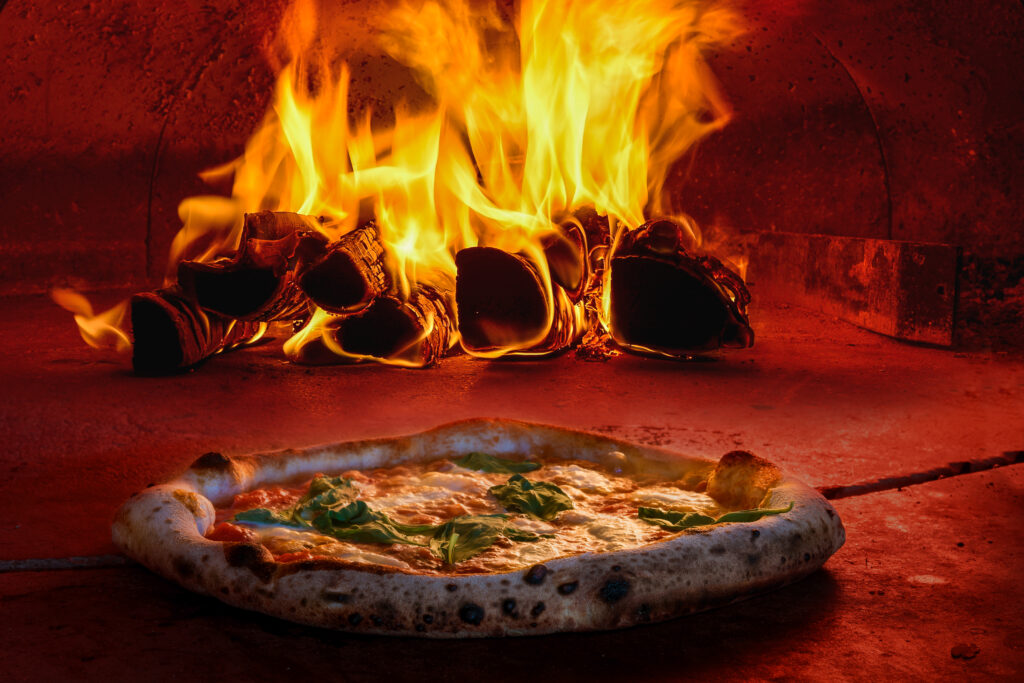
When it comes to cooking in a pizza oven, understanding your oven is crucial. In this section, we will discuss the different types of pizza ovens, fuel sources, and temperature management.
Types of Pizza Ovens
There are various types of pizza ovens available in the market, each with its unique features and benefits. Here are some of the most common types of pizza ovens:
| Type of Pizza Oven | Description |
|---|---|
| Wood-fired | Uses wood as a fuel source and can reach high temperatures quickly. Gives a distinct smoky flavor to the food. |
| Gas-fired | Uses propane or natural gas as a fuel source and is easy to use. Provides consistent heat and temperature control. |
| Electric | Uses electricity as a fuel source and is perfect for indoor use. Provides precise temperature control and is easy to use. |
| Portable | Lightweight and easy to move around. Can be wood-fired, gas-fired, or electric. Perfect for outdoor use and camping. |
Fuel Sources
The type of fuel source you use will affect the cooking time, temperature, and flavor of your food. Here are some of the most common fuel sources used in pizza ovens:
- Wood: Provides a smoky flavor and can reach high temperatures quickly. Requires more attention to temperature management.
- Gas: Provides consistent heat and temperature control. Easy to use and requires less attention to temperature management.
- Electricity: Provides precise temperature control and is easy to use. Perfect for indoor use.
Temperature Management
Temperature management is a crucial aspect of cooking in a pizza oven. The temperature of your oven will affect the cooking time and the final result of your food. Here are some tips for managing the temperature of your pizza oven:
- Preheat your oven: Preheating your oven is essential to ensure the oven reaches the desired temperature before cooking.
- Use a thermometer: Use a thermometer to monitor the temperature of your oven and make sure it stays consistent.
- Adjust the temperature: Adjust the temperature of your oven by adding or removing fuel. This will help you maintain the desired temperature.
Understanding your pizza oven is essential to cook delicious food. By knowing the type of pizza oven, fuel source, and temperature management, you can cook your favorite pizza and other foods to perfection.
Pizza Dough Basics
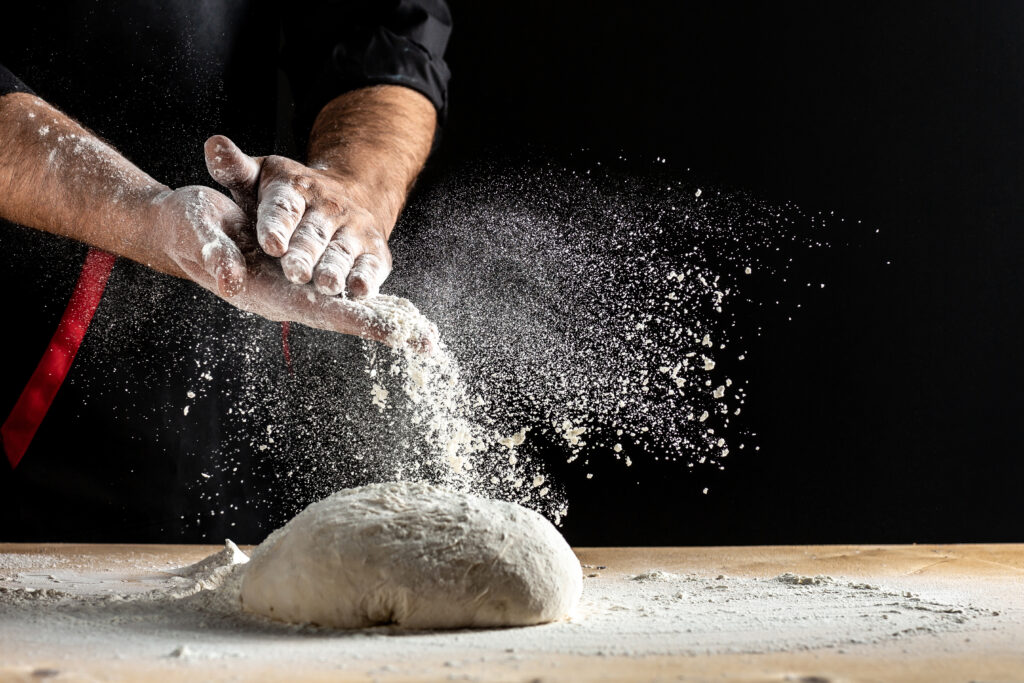
If you have a pizza oven, you must learn how to make a great pizza dough. The dough is the foundation of any great pizza, and it’s worth taking the time to get it right. Here are the basics of making pizza dough.
Ingredients
The ingredients for pizza dough are simple: flour, water, salt, and yeast. You can use all-purpose flour or bread flour. Bread flour has more protein and will give you a chewier crust. You can also add sugar and olive oil, but they are not necessary. Sugar will help the dough brown, and olive oil will add flavor and tenderness to the crust.
Here is a basic recipe for pizza dough:
| Ingredient | Amount |
|---|---|
| Flour | 3 cups |
| Water | 1 cup |
| Salt | 1 tsp |
| Yeast | 1 tsp |
Preparation
Making pizza dough is easy. You can make it by hand or use a stand mixer. Here are the steps:
- In a large bowl, mix the flour and salt.
- In a separate bowl, mix the water and yeast. Let it sit for a few minutes until the yeast is activated.
- Add the water-yeast mixture to the flour and mix until it forms a shaggy dough.
- Knead the dough for 10-15 minutes until it becomes smooth and elastic.
- Form the dough into a ball and place it in a lightly oiled bowl. Cover it with plastic wrap or a damp towel.
Resting and Proofing
After you’ve made the dough, you need to let it rest and proof. Resting allows the gluten to relax, making it easier to stretch the dough. Proofing allows the yeast to ferment the dough, giving it flavor and making it rise.
- Let the dough rest for at least 30 minutes before you start shaping it.
- After resting, divide the dough into portions and shape them into balls.
- Place the dough balls on a floured surface and cover them with plastic wrap or a damp towel.
- Let the dough proof for at least 2 hours at room temperature or overnight in the refrigerator.
That’s it! Once your dough has rested and proofed, it’s ready to be shaped and topped with your favorite ingredients. With a great pizza dough, you’ll be able to make delicious pizzas in your pizza oven.
Pizza Sauce and Toppings
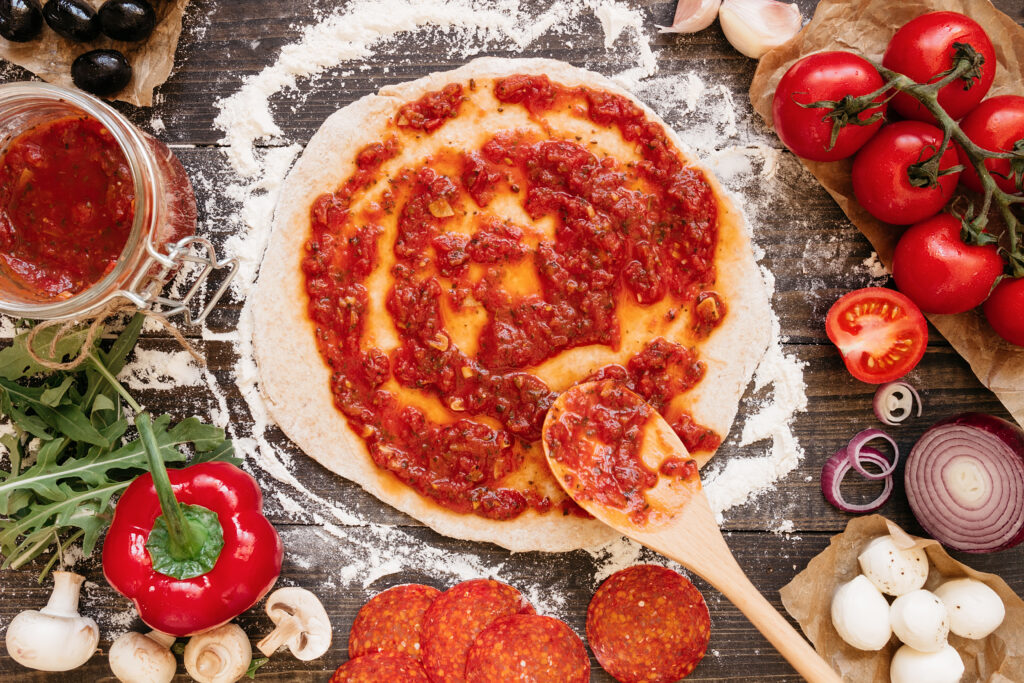
Choosing the Right Sauce
The sauce is a crucial component of any pizza. It provides the base flavor and helps the toppings to adhere to the crust. When selecting a sauce, it is important to consider the overall flavor profile you are going for. A classic tomato sauce is always a safe bet, but you can also experiment with pesto, Alfredo sauce, or even barbecue sauce for a unique twist.
It is also important to consider the consistency of the sauce. A thicker sauce will result in a heartier pizza, while a thinner sauce will allow the crust to be the star of the show. Experiment with different consistencies and see what works best for your taste.
Selecting Toppings
When it comes to toppings, the possibilities are endless. However, it is important to consider the texture and flavor of each topping to ensure they complement each other. For example, if you are using a lot of salty toppings like olives or anchovies, balance them out with something sweet like pineapple or bell peppers.
It is also important to consider the cooking time of each topping. Some toppings, like mushrooms or onions, may need to be pre-cooked before being added to the pizza to ensure they are fully cooked by the time the pizza is done.
Here are some popular toppings to consider:
- Pepperoni
- Sausage
- Mushrooms
- Onions
- Bell peppers
- Olives
- Pineapple
- Ham
- Bacon
- Chicken
Balancing Flavors
When it comes to pizza, balance is key. You want to ensure that each bite is packed with flavor without any one ingredient overpowering the others. Here are some tips for balancing flavors:
- Use a variety of toppings to ensure a mix of flavors and textures.
- Don’t overload the pizza with too many toppings, as this can result in a soggy crust and overwhelming flavors.
- Consider adding fresh herbs like basil or oregano to enhance the overall flavor profile.
- Experiment with different cheeses to find the perfect balance of saltiness and creaminess.
By following these tips, you can create a delicious pizza that is sure to impress. Remember to have fun and experiment with different flavors and toppings to find your perfect pizza.
Cooking in the Pizza Oven
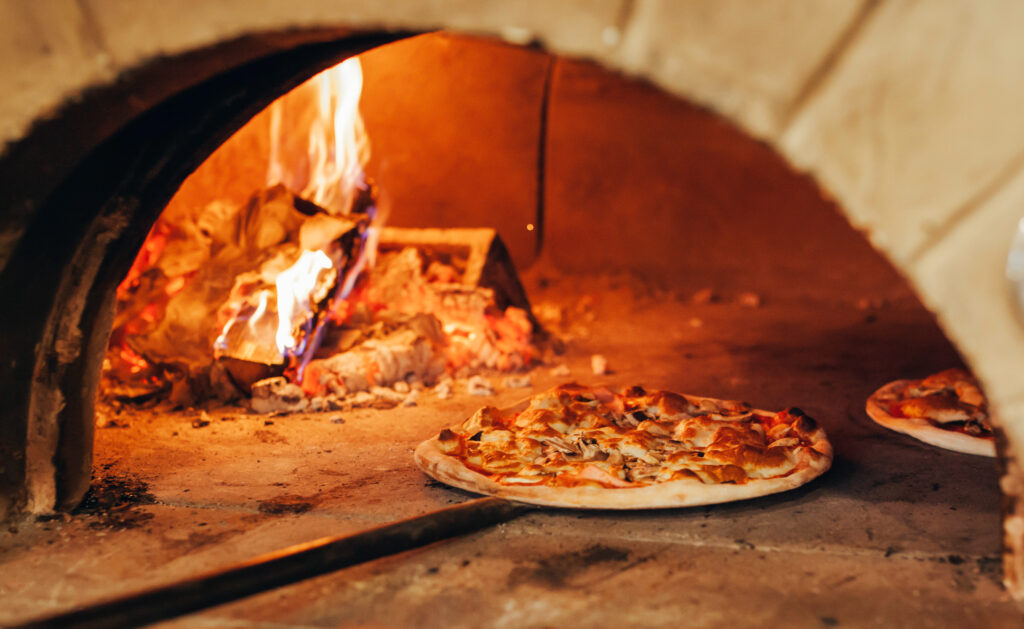
Cooking in a pizza oven is a fun and unique way to prepare a variety of foods beyond just pizza. Here are some tips to help you get the most out of your pizza oven.
Preheating the Oven
Preheating your pizza oven is crucial for achieving the perfect crust. You’ll want to preheat your oven for at least 30 minutes to an hour before cooking. The ideal temperature for cooking pizza is between 700-800°F, but you can adjust the temperature depending on what you’re cooking.
Cooking Time
The cooking time for pizza and other foods will depend on the temperature of your oven and the thickness of your food. For pizza, you’ll typically want to cook it for 2-5 minutes, rotating it occasionally to ensure even cooking. For other foods, such as meats or vegetables, you’ll want to adjust the cooking time accordingly. A good rule of thumb is to cook at a high temperature for a short amount of time.
Rotating Your Pizza
Rotating your pizza is important for ensuring even cooking and a crispy crust. You can rotate your pizza by using a pizza peel or by using a turning peel. A turning peel is a special tool that allows you to rotate your pizza without removing it from the oven. If you’re using a regular pizza peel, simply rotate your pizza every 30 seconds to a minute.
Overall, cooking in a pizza oven can be a fun and delicious way to prepare a variety of foods. With the right temperature, cooking time, and rotating technique, you can achieve perfectly cooked meals every time.
Cleaning and Maintenance
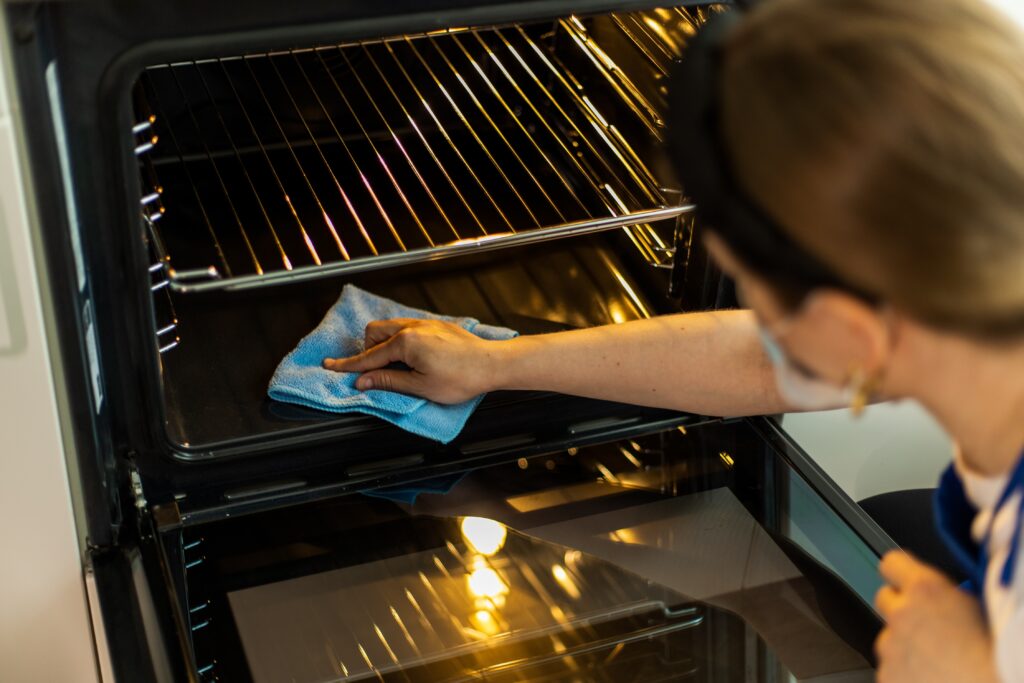
Pizza ovens need regular cleaning and maintenance to ensure well-cooked and good-tasting food. Neglecting to clean your pizza oven can result in a build-up of ash, soot, and food debris that can affect the flavor of your pizza and even damage your oven. Here are some tips for keeping your pizza oven clean and well-maintained.
Post-Cooking Cleanup
After cooking, wait until your pizza oven has completely cooled before you start cleaning. We recommend waiting until the next day, after cooking. Using pizza oven tools like an ash rake, collect the ash and wood remnants into a pile near the mouth of the oven. Scoop out the ash and debris with a shovel and dispose of it properly.
If you have a wood-fired pizza oven, you should also remove any remaining wood and charcoal from the oven. After removing the ash and wood, use a stiff-bristled brush to sweep the inside of the oven and remove any remaining debris. If there is any stubborn food debris, you can use a damp cloth or sponge to wipe it away.
Regular Maintenance
To keep your pizza oven in good condition, you should perform regular maintenance. This includes checking the condition of the oven walls, floor, and ceiling. If there are any cracks or damage, you should repair them as soon as possible to prevent further damage.
You should also check the chimney and flue regularly to ensure that they are clear of debris and functioning properly. If you notice any blockages or damage, you should have them repaired by a professional.
Finally, you should clean the exterior of your pizza oven regularly to prevent the build-up of dirt and grime. Use a mild soap and water to clean the exterior and rinse with a hose. Avoid using abrasive cleaners or scrubbers that can scratch or damage the surface.
By following these tips for post-cooking cleanup and regular maintenance, you can keep your pizza oven in top condition and ensure that your pizzas are always delicious and perfectly cooked.
Advanced Techniques
Using a Pizza Peel
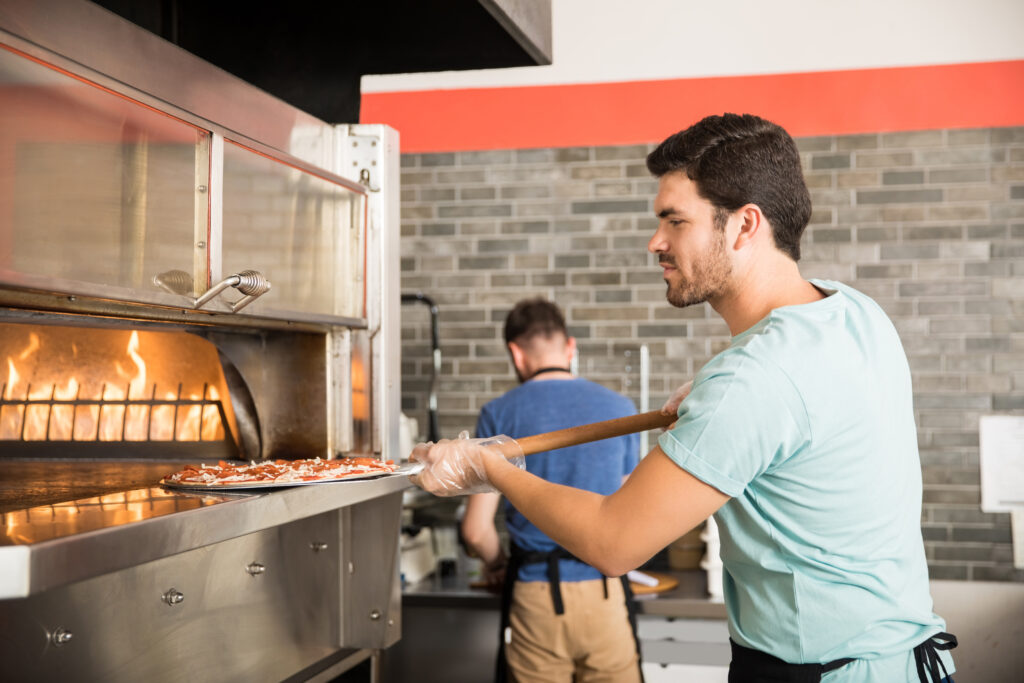
A pizza peel is an essential tool for anyone serious about making pizza in a pizza oven. It is a flat, shovel-like tool that is used to slide the pizza into the oven and remove it when it’s done. To use a pizza peel, dust it with flour or cornmeal to prevent the dough from sticking. Then, place the pizza on the peel and slide it into the oven.
To remove the pizza, slide the peel under the cooked pizza and lift it out of the oven. Be sure to rotate the pizza halfway through cooking to ensure that it cooks evenly. If you’re having trouble with the pizza sticking to the peel, try using a metal peel instead of a wooden one.
Making Stuffed Crust Pizza
Stuffed crust pizza is a delicious variation on traditional pizza that involves stuffing the crust with cheese or other ingredients. To make stuffed crust pizza in a pizza oven, start by rolling out the dough and placing it on a pizza peel.
Next, add your toppings to the pizza, leaving about an inch of space around the edge. Then, fold the edge of the dough over the toppings and press it down to seal the crust. Finally, add your cheese or other stuffing ingredients to the crust and bake the pizza in the oven.
Cooking Non-Pizza Foods
While pizza is the most obvious thing to cook in a pizza oven, there are many other foods that can be cooked in this versatile appliance. Some great non-pizza foods to cook in a pizza oven include:
- Roasted vegetables
- Grilled meats
- Baked potatoes
- Bread
- Desserts like fruit crisps and cobblers
To cook these foods in a pizza oven, simply adjust the temperature and cooking time as needed. For example, roasted vegetables may need to be cooked at a lower temperature for a longer time than pizza. Be sure to experiment with different foods and cooking techniques to get the most out of your pizza oven.


